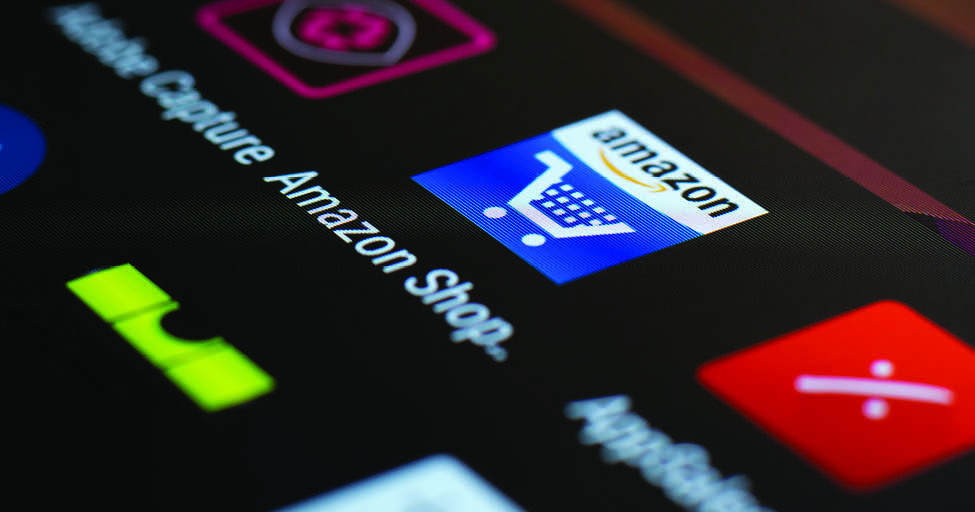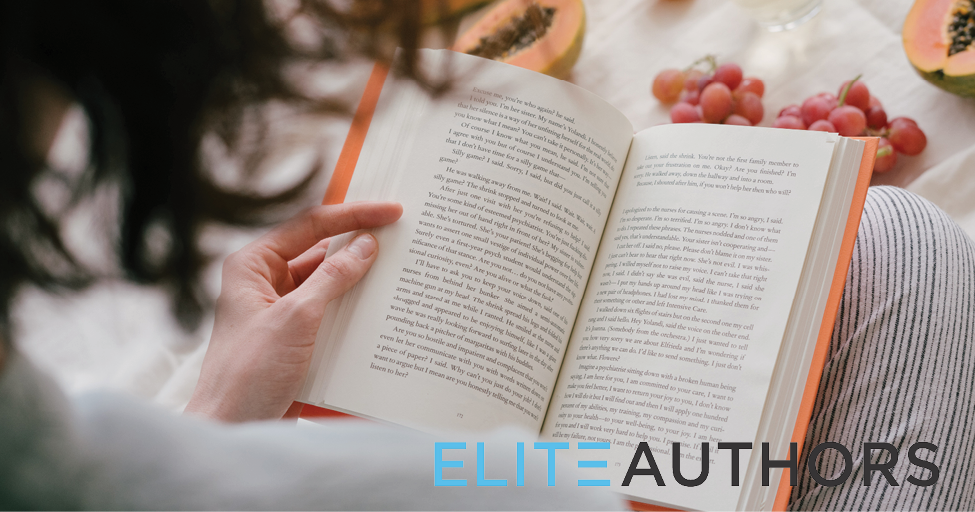
How to Self-Publish on Amazon
July 14, 2021
Leveraging Amazon’s Selling Tools for Authors
July 21, 2021How to Self-Publish a Book

It’s every writer’s goal to be published. From the indie author to the renowned novelist, all authors are excited for the world to read their work. And once you’ve finished your manuscript, it’s time to decide whether to self-publish or sign a book deal with a traditional publishing company. Let’s take a look at how to self-publish a book.
Pros and cons of self-publishing a book
Choosing your publishing method is a big decision. If you’ve never thought about how to self-publish a book before, it can be daunting to figure out where to start. The best way to decide whether to self-publish or work with a traditional publisher is to first educate yourself on the pros and cons.
How much can you make from self-publishing a book?
Each self-publishing platform offers their own commission plan. For instance: if you sell a self-published print book at a local bookstore, you’ll earn different commission than if you sell a self-published e-book through Amazon Kindle.
What advantages do traditional publishers offer authors?
Traditional publishers have resources like book editing options and book cover designers. These services can cost money, so be sure to ask each publisher a lot of questions before you sign a book deal.
How can you overcome some of the challenges of self-publishing your book?
The best way to overcome challenges is to be prepared. So do your research and determine what you’ll need to self-publish. Here are some questions to keep in mind during the self-publishing process:
- Do you need to hire an editor?
- How will you market your self-published book?
- Which self-publishing platform is best for you?
Formatting your manuscript for self-publishing
Your manuscript’s format is important. If your book isn’t formatted well, it won’t impress your potential readers. So take the time to make sure that your book is ready for the world to see.
What software can you use to format your book for self-publishing?
Whether you’re an indie author or an established writer, you might not have access to formatting software. And that’s okay! Depending on your book’s layout, you might not need anything fancy.
If your book is text-heavy, you can use a standard word-processing program like Microsoft Word to format your book. And if you have a lot of illustrations, you can use a graphic design software like the Adobe Creative Suite.
Many self-publishing services offer templates and programs to help format your book. For instance: KDP Select and Kindle each have specific formatting requirements. But they also provide helpful instructions on how to format your book. So before you get too far into the book design process, find out what formatting assistance your self-publishing company provides.
What are the steps to formatting a manuscript for self-publishing?
The first step to formatting your manuscript is obtaining a template from your self-publishing company. And once you have that template, just follow these steps:
- Editing and proofreading. Make sure your manuscript is free of typos, and avoid any words used incorrectly.
- Page numbers. Check every page number for accuracy.
- Book cover. Design an eye-catching cover with clear, crisp images and text.
These steps will help you with formatting. And then it’s off to publishing!
How difficult is it to format a manuscript when self-publishing a book?
Formatting your manuscript is easy if you know what software to use and what challenges you might face. Just keep in mind that your format will be different depending on whether you’re creating a print book or an e-book. Follow the instructions and templates that your self-publishing service provides and contact their customer service if you run into any trouble.
Tips for editing your manuscript when self-publishing a book
Every literary work—from a nonfiction book to a children’s book to everything in between—needs to be edited. Editing helps you avoid typos, misspellings, and even continuity gaps. So before you self-publish, get your manuscript professionally edited!
How can you get your manuscript professionally edited before self-publishing a book?
When you’re ready to start the editing process, it’s easy to find an editing service. Do some online research to educate yourself on costs and timing. And make sure that the service that you choose can help with multiple phases of editing, including:
You can also hire a beta reader to give you feedback on your book as a whole before you start submitting to self-publishing companies.
Why do writers need editors when self-publishing a book?
All writers need editors. You’ve been working hard on your book, and you need a fresh set of eyes to make sure you’re not overlooking any errors. Your book editor can help make sure that your story flows well, historical facts are accurate, and that there are no typos or misused words in your manuscript.
What should you look for when performing editorial passes on your own manuscript?
As an author, you are proud of your work. And you want to impress all of your readers—including your editor! So before you send your manuscript to a professional editing service, you can perform an editorial pass on your own.
First, make sure that your story flows well and makes sense. Then, confirm that any historical names or facts in your book are accurate. After that, you can get into the nitty-gritty of searching for any typos or incorrectly used words.
Self-publishing e-books versus self-publishing print books
Self-publishing takes time and energy. And after you self-publish, you’ll need to market your book to reach your target audience. You can have a successful career as a self-published author regardless of whether you prefer to publish e-books or printed books. So check out your options and see what’s best for you!
What challenges are associated with self-publishing an e-book versus a print book?
One challenge associated with self-publishing a print book instead of an e-book is timing. It will take time for your publisher to physically print and ship the books. If you self-publish an e-book instead, you’ll often see your book ready for sale more quickly.
What genres of books are easiest to publish as an e-book rather than a print book?
You can publish your work as an e-book or a print book in just about every genre. But some genres are more suited to a physical book rather than a digital copy. For instance: a graphic novel or a children’s book with interactive aspects might be best as a print book. But a fiction or nonfiction novel can work as both a digital and a print book!
When should you consider releasing both e-books and print books when you self-publish?
Readers have various opinions in the print versus e-book debate. And you want to make your readers happy! So as long as your manuscript can translate well to both a physical book and an e-book, it’s a good idea to consider publishing with both methods. Every book sale counts. And providing your audience with multiple options can ring up your sales!
Costs for self-publishing a book
Self-publishing a book is a “spend money to make money” process. You can earn a living as a self-published author, but first you’ll need to invest in your book! As with any investment, it’s a good idea to be aware of the costs you can expect when you self-publish a book.
What can affect the cost of self-publishing a book?
Two factors that affect the cost of self-publishing a book are the services you need and the actual book production.
Here are a few services that you might need to pay for during the self-publishing process:
- Graphic design for your book cover design
- Book editing to ensure that your manuscript is free of typos and misused words
- Formatting to prepare your work for print and/or e-books
Print book production is another expense. Here are a few things to keep in mind if you’re printing your book:
- What kind of paper? High-quality paper for a photo book or a graphic novel will cost more than standard newsprint used for most novels.
- What kind of ink? Color ink is expensive. If you have a lot of colorful images, your book will cost more than a text-based book that just uses black ink.
- What kind of cover? Hardcover books cost more to produce than paperbacks. So if cost is a concern, opt for paperback over hardcover.
E-books generally cost less to produce than print books, but there are also design and formatting costs associated with digital copies. So do your research and be prepared!
Where do the costs of self-publishing a book come from?
The costs of self-publishing a book come primarily from preparing and producing your book. The publishing platform that you choose to work with will likely offer some of these services. And you can find outside help for cover design, editing, and any other services that your publishing company doesn’t provide.
How much does it cost to publish a book with a traditional publisher?
If you sign a book deal with a traditional publisher, there should be no cost to you. The publishing house will cover the production costs and book marketing campaign to drive up your book sales. A traditional publisher basically gambles on your book. They spend the money up front in hopes that your book will earn them a large return on their investment.
Book deals are very hard to obtain, though, so if you’re just starting out as an indie author, it might be best to start with self-publishing.
How to get your self-published book printed
Once you decide to self-publish rather than work with a traditional publisher, you need to know your next steps. So once you select the self-publishing platform you want to work with, just prepare your book and submit it for printing!
What do you need to get your self-published book printed?
All you really need to get your self-published book printed is the book itself. It just needs to be formatted correctly. Your self-publishing company should have a template to help you format your book. And don’t forget that you can hire a formatting service if you need help!
When should you send your self-published book to be printed?
Your book needs to be perfectly formatted and professionally edited. Once those two steps are done, it’s time to go to print! Your self-publishing company might not do a final copyedit or line edit before printing, so be sure to send them a print-ready book.
What is the process of having a self-published book printed?
Your publishing house can walk you through their specific process. In general, you can expect your printed books to ship a few weeks after you send your work in for printing. The timeline will depend on the quantity of books you’ve ordered and your publisher’s production timeline.
Marketing and distributing your self-published book
Figuring out how to self-publish a book goes beyond putting the book itself together. As an author, you already know that it’s important to write every day. But did you know that marketing and distributing your self-published book takes the same dedication? Book marketing and distribution are crucial to earning every book sale. And although it’s time-consuming, it’ll be worth it when you’re a successful self-published author!
Why is it important to market and distribute your self-published book?
Book marketing and distribution put your work in front of your target audience. It’s the only way your readers will know that your book exists! So set aside some time and energy to promoting your book. And then sit back and wait for those book sales!
What platforms can self-published authors use to market and distribute books?
There are multiple platforms that you can use to market and distribute your books. If you have a small marketing budget, start with low-cost options like social media or a basic website. And if you’ve allocated big bucks to your marketing, consider a book fair or book tour! These options will all put you directly in front of your target audience.
What tools do you need to market and promote your self-published book?
Your publisher might have built-in tools to help you market your book. An e-book aggregator will send your book to multiple retailers. And some self-publishing companies offer social media and website marketing. So find out how your publishing platform can help you market and promote your book!
Let Elite Authors help prepare your book for self-publishing
Self-publishing is exciting. But it can also be a difficult process to navigate! Elite Authors is here to help you succeed in your journey of learning how to self-publish a book. Visit our website to learn how we can boost your career as a successful author!


